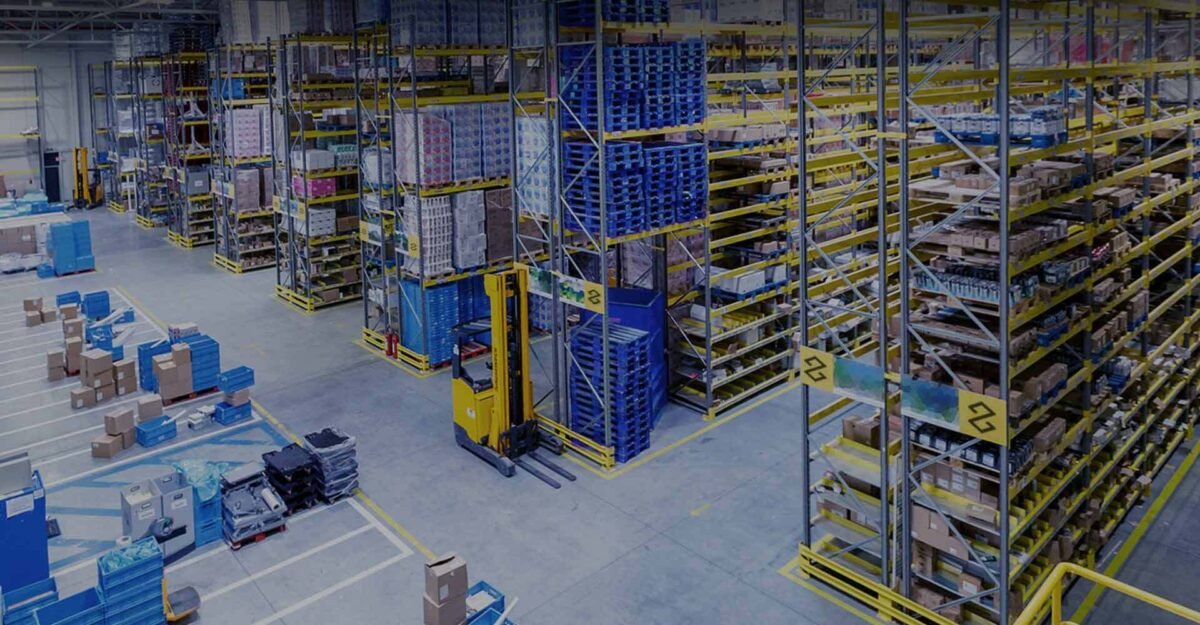How Ecommerce Fulfilment Can Boost Shopify Conversion Rates

When trying to convert more customers, retailers will typically focus on the website user experience, adjust their ad targeting, refine their offers, and optimise their email marketing automation. Often overlooked is the importance of fast and efficient order processing operations. Working with third-party logistics (3PL) providers can help Shopify stores gain a competitive advantage, thanks to later order cut-off times, and enhanced inventory control. Getting picking and packing right can be an engine for growth.
What is third-party logistics?
3PL is the process of entrusting a separate business entity with the management of finished goods intake, picking, packing, and distribution on a retailer’s behalf, as the retailer. Due to the rampant growth of the 3PL services market, and intense competition, fulfilment houses have been forced to innovate and offer additional services to differentiate, such as outsourced customer service, product customisation, returns management, and customs clearance. In the case of UK-based Zendbox, this Shopify fulfilment specialist provides its clients with Zendportal, an inventory analysis platform that utilises order data to help predict when, and when not a retailer should order in new stock from suppliers. This software considers the number of processed orders, orders currently being picked and packed, orders dispatched, delivered and returned. A demand planning platform, Zendportal helps retailers avoid understocking, which leads to missed sales, and overstocking, to ensure capital isn’t unnecessarily tied up in inventory.
How to find the right Shopify fulfilment specialist
3PLs are diverse, so the first step is to search for one that specialises in helping Shopify stores scale their operations. Also investigate their third-party customer and employee reviews, and reach out to their clients that feature on their case studies. Some 3PLs will be based in one country, whereas others will have their own premises, or partner warehouses, based overseas. Fulfilment centres will help with certain product verticals, such as health, wellness, luxury or sporting goods, and differ in levels of involvement, some providing purely the grunt work of order processing, whereas others will also act as partners, and strategic consultants. 3PL services are typically contract-based, and they will typically demand a minimum daily order volume of between 10, and 300 shipments, or a minimum monthly spend. Pricing is complex, and considers required storage volume, picking, packaging, shipping, and returns fees. Some fulfilment providers will charge a monthly fee, along with an initial cost for setup and integration with your Shopify store, and/or order management system. Some providers will also offer Seller-Fulfilled Prime, and Amazon FBM (Fulfilled by Merchant) support. After taking these factors into account, benchmark pricing against the competition, and establish KPIs (key performance indicators) and OKRs (objectives and key results) to ensure both client and 3PL are on the same page in terms of performance expectations, and metrics such as order processing speed, next-day delivery success rate, on-time delivery performance, and customer satisfaction can be returned in real-time, and on periodical bases.
How does Shopify 3PL work?
After negotiating, and signing your contract, then begins the onboarding. You will meet with your account manager, either in-person, including a tour of the fulfilment warehouse, or remotely, and establish lines of communication between your staff, and the fulfilment centre team. Once your Shopify, and other sales channels, are integrated with the 3PL’s warehouse management system (WMS), and your stock begins shipping in bulk to the new warehouse, goods can be placed into storage, assigned picking locations, and orders can start flowing in. When an order is placed, a picking note is generated, and the picking team will collect individual, or grouped orders, depending on their picking methods. Goods are then taken to the packing bench, ready for packaging and the application of the shipping label. The moment the shipping label is generated, online shoppers will receive a tracking notification, giving them visibility of their delivery journey, and depending on carrier partner, various in-flight delivery options, such as timed delivery windows, the ability to identify a safe place for parcels to be left, and returns methods. The fulfilment centre will then group packets and parcels by carrier, ready for collection. How late this collection takes place can have a real impact on customer conversion rates.
How effective 3PL can increase conversion rates
Thanks to new research, offering a late order cut-off is a major competitive advantage, proven to increase eCommerce conversion rates and customer loyalty. After learning that 35% of online orders are placed between 4pm and 9pm, Zendbox has recently introduced a 10pm order cut-off time, helping Shopify stores offer next-day delivery to more consumers. As a result, clients such as Complete Strength have experienced an average conversion rate increase of 15%.
Shopify fulfilment case study – Complete Strength
James Khoury, founder and CEO of Zendbox, added: “After analysing the eCommerce SMEs, and major brands that work with us, we have discovered that merchants who don’t offer late order cut-off times, are missing out on order conversions, and experiencing higher customer acquisition costs (CAC).”
“Typically, it is difficult for many eCommerce businesses to offer late order cut-off times, as this requires robust technology, fulfilment warehouse infrastructure, and carrier partnerships. Most 3PL providers offer cut-off times between 12pm and 3pm, and many online brands fulfilling orders in-house have even earlier cut-off times. For the average consumer, this simply isn’t good enough.”
Complete Strength founder, Rob Whitfield, has acquired new customers thanks to Zendbox’s 10pm order cut-off time, adding: “The majority of our orders will come in of an evening. When we had an earlier cut-off time, we missed out on sales. Now we’ve got a later cut-off time with Zendbox, we get less abandoned carts. We have also noticed customers are shopping with us simply because of the later cut-off time.”
The future of eCommerce order fulfilment
Predicted to more than double in size by 2030, demand for 3PL services is skyrocketing. In recent years, Shopify’s growth rate has been as much as three times that of the global eCommerce. At the same time, consumers are becoming increasingly picky, demanding personalisation, price transparency, traceability, along with free and fast, yet environmentally-friendly shipping. This combination of intense competition from other 3PLs, pressure from Shopify merchants and consumers alike, has made for an exciting, yet challenging environment for fulfilment providers to thrive, and to maintain their stronghold as the go-to strategic imperative for ambitious Shopify brands.
